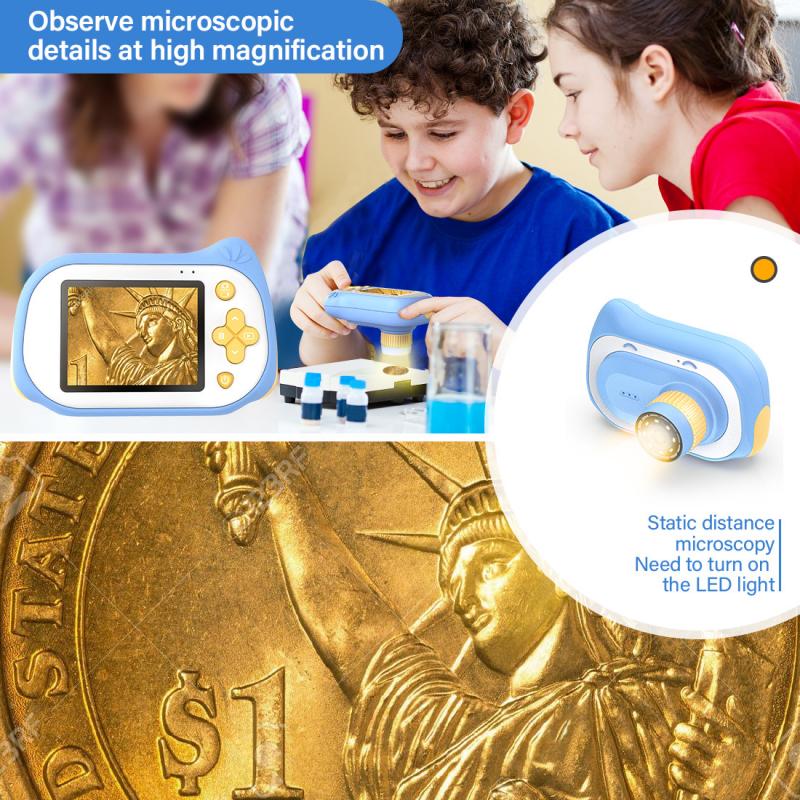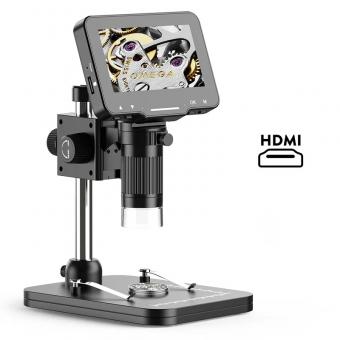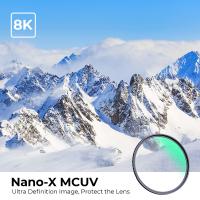What Can You See With 1000x Magnification ?
With 1000x magnification, you can see very small details of objects that are not visible to the naked eye. For example, you can see the fine structure of cells, bacteria, and other microorganisms. You can also see the details of small structures such as hairs, fibers, and crystals. Additionally, you can observe the surface features of materials such as metals, ceramics, and polymers. With 1000x magnification, you can also see the details of small electronic components such as transistors and integrated circuits. Overall, 1000x magnification is a powerful tool for exploring the microscopic world and understanding the structure and behavior of materials and living organisms at a very small scale.
1、 Microorganisms
With a 1000x magnification, one can see a wide range of microorganisms that are not visible to the naked eye. These include bacteria, viruses, fungi, and protozoa. The use of high-powered microscopes has revolutionized our understanding of the microbial world and has allowed us to study the intricate details of these tiny organisms.
One of the most significant advances in recent years has been the development of electron microscopy, which has allowed scientists to see even smaller structures within microorganisms. For example, with a 1000x magnification electron microscope, it is possible to see the internal structures of viruses, including their genetic material and protein coats.
In addition to studying the structure of microorganisms, high-powered microscopes have also been used to study their behavior and interactions with other organisms. For example, researchers have used microscopy to study the interactions between bacteria and host cells during infection, as well as the interactions between different species of microorganisms in complex microbial communities.
Overall, the use of high-powered microscopes has greatly expanded our understanding of the microbial world and has opened up new avenues for research into the role of microorganisms in health, disease, and the environment.

2、 Cells and tissues
With a 1000x magnification, one can see cells and tissues in great detail. This level of magnification allows for the observation of the intricate structures and functions of cells and tissues that cannot be seen with the naked eye. For example, one can observe the nucleus, mitochondria, and other organelles within a cell, as well as the different types of cells that make up a tissue.
In recent years, advancements in technology have allowed for even greater magnification capabilities, such as electron microscopy, which can magnify up to 10,000x or more. This has led to new discoveries and a deeper understanding of cellular and tissue biology.
For example, researchers have used high magnification imaging to study the structure and function of neurons in the brain, leading to new insights into neurological disorders such as Alzheimer's and Parkinson's disease. Additionally, high magnification imaging has been used to study the behavior of cancer cells, leading to new treatments and therapies.
Overall, the ability to see cells and tissues at a high magnification has revolutionized the field of biology and has led to new discoveries and advancements in medicine and science.

3、 Bacteria and viruses
With a 1000x magnification, it is possible to see bacteria and viruses. Bacteria are single-celled microorganisms that can be found almost everywhere on Earth. They come in various shapes and sizes, and some of them can cause diseases in humans, animals, and plants. With a 1000x magnification, it is possible to see the structure of bacteria, including their cell walls, cytoplasm, and flagella. This level of magnification can also reveal the presence of bacterial colonies, which are groups of bacteria that grow together.
Viruses, on the other hand, are much smaller than bacteria and cannot be seen with a regular microscope. However, with a 1000x magnification, it is possible to see some of the larger viruses, such as the herpes virus or the influenza virus. These viruses are composed of genetic material (DNA or RNA) surrounded by a protein coat. They cannot reproduce on their own and need to infect a host cell to replicate.
It is worth noting that the latest point of view on viruses is that they are not considered living organisms, as they do not have the ability to carry out metabolic processes on their own. Instead, they are considered as infectious agents that can cause diseases in living organisms. Nonetheless, with a 1000x magnification, it is possible to see some of the larger viruses and study their structure and behavior.

4、 Nanoparticles and nanomaterials
With 1000x magnification, it is possible to see nanoparticles and nanomaterials. Nanoparticles are particles that are between 1 and 100 nanometers in size, while nanomaterials are materials that have at least one dimension in the nanoscale range. These materials have unique properties that differ from their bulk counterparts, making them useful in a wide range of applications, including electronics, medicine, and energy.
At this magnification, it is possible to see the individual particles that make up these materials, as well as their size, shape, and distribution. This information is crucial for understanding how these materials behave and interact with their environment. For example, researchers can use 1000x magnification to study the behavior of nanoparticles in biological systems, such as how they are taken up by cells and how they affect cellular processes.
Recent advances in microscopy technology have made it possible to achieve even higher magnifications, allowing researchers to study materials at the atomic and molecular level. This has led to new insights into the properties and behavior of nanomaterials, as well as the development of new materials with tailored properties for specific applications.
Overall, 1000x magnification is a powerful tool for studying nanoparticles and nanomaterials, providing valuable insights into their properties and behavior. As technology continues to advance, we can expect even more detailed and precise imaging of these materials, leading to new discoveries and applications.








































